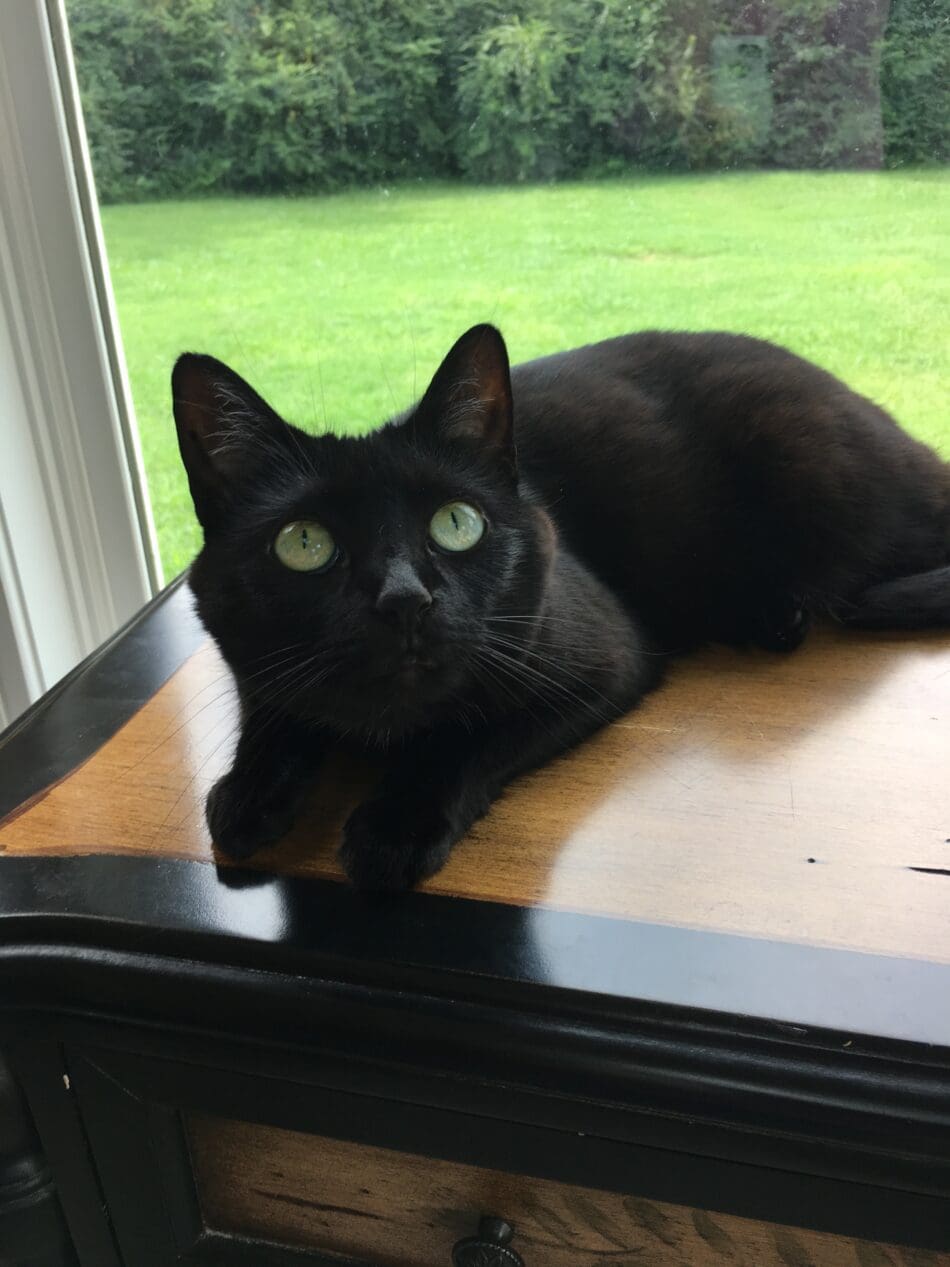
If you have a cat who meows for everything and you’re wondering how in the world you can train him to be quiet, you first have to look at whether you’ve actually reinforced the unwanted behavior. Have you been giving your cat attention in any form whenever he meows? If so, you’ve let your cat know that vocalizing will get rewarded.
Rule out Medical Causes for Your Cat’s Behavior
To be safe, if this is a new behavior or if your cat is up there in age, have him checked out by the veterinarian to make sure there isn’t an underlying medical cause. It’s common for older cats who have some hearing loss or are experiencing age-related cognitive dysfunction, to start vocalizing more. You also want to make sure kitty isn’t meowing because he’s in pain or disoriented.
It’s crucial to identify WHY your cat is meowing. Is it medical? Attention? Stress? Needing comfort? Your cat isn’t meowing just to meow. There’s a reason behind the behavior.
Train Your Cat to be Quiet
How do you do this? It’s actually very simple but it takes patience. Wait out the meowing and don’t acknowledge your cat until he stops. When your cat is quiet, immediately reward. At first, the time of silence will be very brief but if you only reward when the cat isn’t meowing, he’ll eventually realize that silence offers a better consequence than vocalization. Gradually, you can increase the time you’re asking to be quiet before offering the reward.

Photo: Pam Johnson-Bennett
I’ve found the easiest way to do “quiet” training is with a clicker. I click when the cat isn’t meowing and immediately offer a reward. Clicker training is a very effective way to let the cat know what you want.
Below is a video demonstrating how clicker training is used to train a very vocal cat to be quiet. The excellent video by Dr. Sophia Yin, shows how the cat learns to make the connection that vocalization gets no reward but being quiet earns a treat.
Be Patient and Consistent When Training Your Cat
If your cat has been used to getting his own way through non-stop meowing, it will take some patience on your part to do the training but since you’re dealing with an intelligent animal, he’ll soon learn what behavior offers good rewards and what behavior offers nothing.
Consistency is extremely important in training so don’t reward for being quiet half the time while you’re yelling at him or giving in to what he wants the other times. Inconsistency sends a very confusing mixed message to the cat and it creates frustration for everyone involved.
Need More Information?
For more information on cat behavior and training, refer to the books by Pam Johnson-Bennett. Pam’s books are available at bookstores and online. We’ve included links to Amazon here on our website.
If you have a question about your cat’s behavior or health, contact your veterinarian. This article is not intended as a medical diagnosis nor is it a replacement for your cat’s regular veterinary care. This article is for general information purposes only.
 Problem Solving & Advice by Pam Johnson-Bennett Cat Behavior Expert & Best-selling Author
Problem Solving & Advice by Pam Johnson-Bennett Cat Behavior Expert & Best-selling Author



